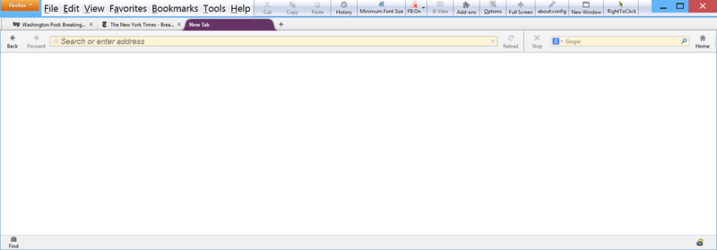- Joined
- Feb 18, 2002
Firefox 29 has just been released. If you have carefully customized the way your Firefox browser looks since version 0.x Beta came out, Firefox 29's Australis theme breaks many of those customizations.
This Add-on will help remove or keep individual Firefox 29 GUI 'improvements' and let you setup things the way you want them to look: https://addons.mozilla.org/en-US/firefox/addon/classicthemerestorer/
Since so many things changed, consider making a brand new profile from scratch for Firefox 29 while still using that add-on.
I made some notes over the years about all the changes I made to mine, maybe somebody else finds a couple of things in the attached .zip file useful.
This Add-on will help remove or keep individual Firefox 29 GUI 'improvements' and let you setup things the way you want them to look: https://addons.mozilla.org/en-US/firefox/addon/classicthemerestorer/
Since so many things changed, consider making a brand new profile from scratch for Firefox 29 while still using that add-on.
I made some notes over the years about all the changes I made to mine, maybe somebody else finds a couple of things in the attached .zip file useful.
Attachments
Last edited:





